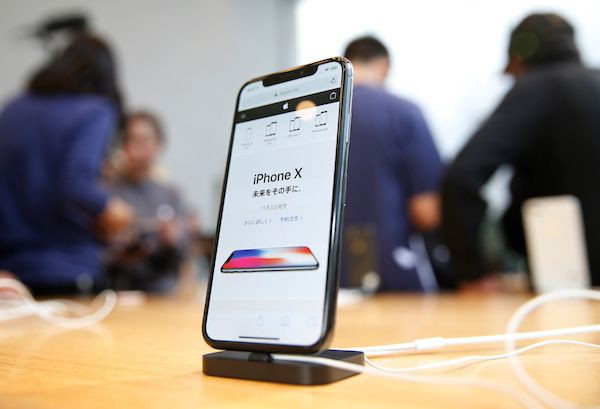Is Apple Developing Display-Embedded Fingerprint Reader For iPhone X Successor?

Apparently, Apple was granted a patent for an OLED display-embedded fingerprint reader last month, and details about this invention are just coming to light this week. Could this mean that Apple is preparing to re-introduce Touch ID to the iPhone X successor next year?
Apple made it clear in October that it had no intention whatsoever of developing an in-display fingerprint scanner for the iPhone X. In fact, the Cupertino giant’s SVP of hardware engineering Dan Riccio told TechCrunch at the time that the company did not consider the technology for the display of the 10th anniversary iPhone or even on its back.
Riccio’s statement was the company’s response to then-rumors saying that Apple was having a hard time incorporating Touch ID with the iPhone X’s display prior the handset’s release. Riccio maintained that when they worked on the iPhone X, they really intended to replace Touch ID with something “better and more natural,” and that thing is now the face-scanning technology called Face ID.
It’s quite strange that Apple claimed to have never worked on a display-embedded fingerprint scanner, when it was recently granted a patent for such an invention. Either Apple is now seeing the need to reintroduce Touch ID to its smartphone series by launching an iPhone 11 with in-display fingerprint reader, or the company’s patent was approved a little too late. Given that Apple is envisioning Face ID as the future of iOS, the latter is the more acceptable picture at this point.
Meanwhile, Patently Apple has pointed out that although Apple may have not really thought of creating an OLED display-embedded fingerprint reader for the iPhone X, the tech giant may have experimented on an alternative methodology for other iDevices, hence the patent. This is a valid point since the patent only mentions OLED display that could be used in portable electronic devices like media players, mobile phones and tablet computing devices. It did not specifically mention that the invention was for the iPhone series only.
Another explanation that Patently Apple said was the possibility that different teams worked on different solutions and different iDevices. So it’s very likely that Apple did work on an OLED screen-embedded Touch ID sensor, but not everyone at the company knew about it.
As it stands, Apple has moved on and made Face ID as the primary security and verification technology of the iPhone X and the upcoming 2018 iPhones. The TrueDepth camera system that implements Face ID is very likely to be adopted to future iterations. As per Apple Insider, KGI Securities analyst and notorious Apple leaker Ming-Chi Kuo has said that next year’s lineup won’t feature Touch ID anymore as the company is completely ditching the technology for Face ID.
“We believe this change will allow all new models to realize a competitive advantage via differentiation, on the back of an integrated user experience full-screen design and TrueDepth Camera/Facial recognition/Face ID/AR applications,” Kuo said two months ago.
The news about the new Apple patent comes more than a week after Apple’s biggest rival, Samsung, was granted patents for an under-screen fingerprint reader for its upcoming flagship phone, the Galaxy S9. According to the documents, Samsung’s fingerprint scanner will be placed in-between the top-most layer of the cover glass and the display panel layer, as first reported by LetsGoDigital.
© Copyright IBTimes 2024. All rights reserved.





















